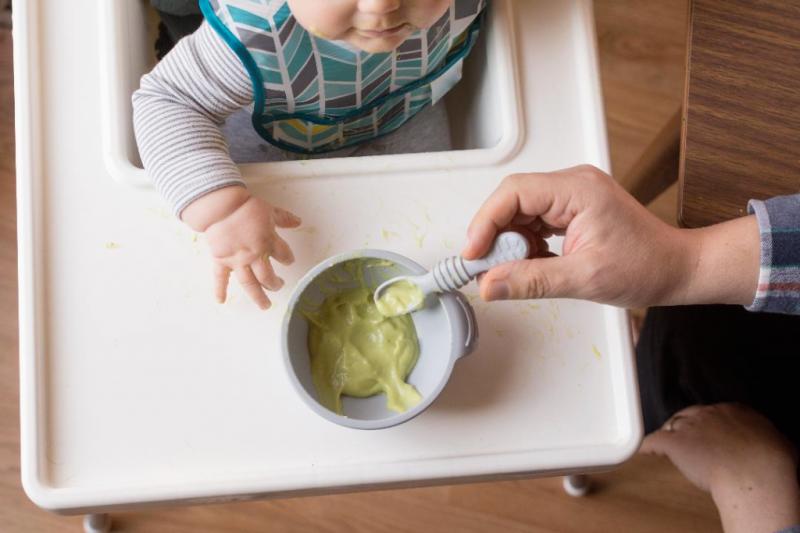4 Essential Tips To Transitioning Your Baby To Solid Foods

Growth and development are an essential part of life. They seem interchangeable, but they’re actually different. Growth refers to changes in your body while development refers to progress. None of the two is superior to the other; they go hand in hand. An early stage of growth and development is childhood, and a major milestone during this period is feeding.
Breast milk is the baby’s first food, although formula milk is also provided in some circumstances. There are infant feeding guidelines on formula that need to be followed. For instance, you can begin giving your baby one to two ounces of infant formula every few hours (two to three hours) in the first days of life—that is, if your baby is receiving only infant formula. During the first few weeks and months, you need to feed them formula every three to four hours. You can wake them up to feed them by stroking, patting, changing their diaper, or undressing them.
When your baby turns four months, you can introduce them to solid foods, which can be accompanied by breast milk and formula. Babies aged between four and six months start learning how to swallow by bringing solid food from the front of their mouth to the back.

Read on to find out how you can transition your baby to solid foods.
- Look Out For Signs They’re Ready
As mentioned earlier, you can start feeding your baby solid foods when they reach the age of four months, but you can do so sometime between four and six months. It depends on whether your baby is ready to take them. To determine whether they’re ready, watch for some signs.
One of the signs to look for is that they can sit upright and hold their head up without your assistance. Another sign is that they’ve begun chewing on their toys or fingers. Appearing hungry even after breastfeeding is a sign too.
If you don’t notice any of these changes, give them more time and continue being on the lookout for signs. Note that they don’t have to show all the changes at once. Even one or two signs are already an indication that they’re ready for solid foods.
- Start With Soft Foods
You need to serve soft foods first so that your child will have a positive experience with food from the beginning.
Consider steaming or boiling solid foods to soften them, like carrots, greens, bananas, and peas. You can take an extra step by blending the food to make a puree. Puree will be safer since it will keep them from choking, and it will be much easier for them to chew and swallow.
Alternatively, you can mash the food after boiling. When mashing, ensure the food is a bit runny. Add warm water or breast milk for consistency.
In addition, provide your baby with organic food, including organic fruits and vegetables that were produced without pesticides. Choose organic brands as well, such as baby cereals that are free of preservatives. You can check out resources like Bellamy’s Organic Institute to learn more about organic foods.
- Take One Step At A Time
When feeding your baby solid food, take one step at a time. Introduce them to new single-ingredient foods without salt or sugar every three or four days to check if they’ll have a reaction, like vomiting, rashes, or diarrhea. After offering them single-ingredient foods, you can start serving foods in combination.
Taking things slow will help you figure out what your baby likes and doesn’t like. More often than not, babies will refuse to eat pureed foods since they find the texture and taste different. If that’s the case with your child, try feeding them pureed food again in a week. If they still don’t like to eat it, consult their pediatrician.
Aside from learning about what foods they like and dislike, you’ll get to see what kinds of foods they react to. Introduce them to potentially allergenic foods early on, such as cow milk products, peanuts and tree nuts, egg, wheat, soy, and fish. This way, you’ll know whether they’re allergic to them. However, it’s best to let the pediatrician have the final word.
- Observe Their Interaction With Food
Be observant during meal time. Take note of food portions. At what point does your baby get full? Is it after three or four bites? Several bites may not seem enough, but they can sometimes be because they’ve just started eating solid food. They may tend to get full faster than when taking breast milk.
If your baby closes their mouth and refuses to take more or they push away the spoon, let them be. Don’t force it. That’s their way of communicating with you, so be sure to listen.
But if you feel they aren’t full when they’ve refused to eat more solid foods, you can give them breast milk instead. However, this could be a sign of an illness, so do check with your doctor.
Conclusion
Transitioning your baby to solid foods shouldn’t be challenging or stressful. If you know what to do, the process will be smooth. Feel free to use this article as your guide.
More to Read:
Previous Posts:








